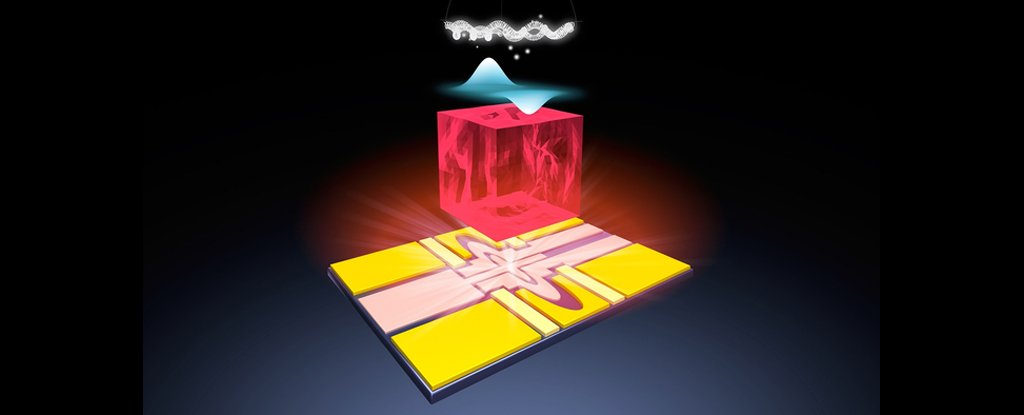Products You May Like
We already have quantum computers of a sort, but at the moment they’re not practical or reliable or large-scale enough to fully realize the massive potential of the technology.
To get closer to that end goal, scientists are working towards what they say could be the ideal building block for a quantum computer.
These building blocks are called qubits. Unlike classical computer bits, which store either 1 or 0 at any one time, these qubits can exist in a simultaneous 0 and 1 state, much like the famous Schrödinger thought experiment in which a cat can be both alive and dead.
That quantum capability promises an exponential leap forward in computing power.
There are various ways to build a qubit, and the vision outlined in the new research is potentially the closest to an ideal qubit yet, but it still has some ways to go before it’s a reality.
It comprises a single electron trapped on top of frozen neon gas. The electron can then be manipulated using a superconducting quantum circuit.
“Thanks to the relative simplicity of the electron-on-neon platform, it should lend itself to easy manufacture at low cost,” says quantum physicist Dafei Jin from the Argonne National Laboratory in Illinois.
“It would appear an ideal qubit may be on the horizon.”
The new qubit meets three main criteria set down by the scientists. First, the need for it to remain stable over a long period of time, known as quantum coherence. In quantum computing, a long time is around a second.
In this case, the ultra-pure solid neon surface is very resistant to interference. By trapping the electron in a vacuum, the electron is able to stay stable long enough for the qubit to be manipulated for whatever the task at hand is.
Qubits also need to be able to be changed from one state to another very quickly (in around a billionth of a second, or a nanosecond). Finally, they need to be capable of entanglement – meaning they need to be able to be easily linked with other qubits.
It’s those parallel multi-qubit operations that will unlock the power and the potential of full quantum computing.
Another key part of the new qubit is the superconductor-based microwave resonator underneath the qubit – it’s crucial in reading the state of the qubit and measuring how well it’s working.
“With this platform, we achieved, for the first time ever, strong coupling between a single electron in a near-vacuum environment and a single microwave photon in the resonator,” says Xianjing Zhou from the Argonne National Laboratory.
“This opens up the possibility to use microwave photons to control each electron qubit and link many of them in a quantum processor.”
But that’s the catch – these extreme temperature requirements mean testing was done in a scientific instrument called a dilution refrigerator, capable of reducing temperatures down to a mere 10 millidegrees above absolute zero (that’s -273.15 degrees Celsius, or -459.67 degrees Fahrenheit).
With that in mind, we’re clearly not yet at the stage of being able to pack qubits like these inside laptops just yet. But even at this early stage, in terms of coherence, the qubit is already performing at the same level as alternatives that have been in development for decades.
Companies including Google, Microsoft, and IBM are pushing ahead with their own qubit designs, but the researchers behind the new technology think that the solution they’ve come up with could be the most promising one yet.
“Our ambitious goal is not to compete with those companies, but to discover and construct a fundamentally new qubit system that could lead to an ideal platform,” says Jin.
The research has been published in Nature.
